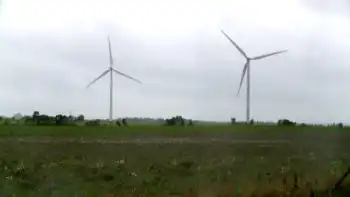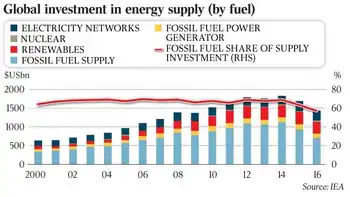Alberta Introduces New Electricity Rules

NFPA 70e Training
Our customized live online or in‑person group training can be delivered to your staff at your location.

- Live Online
- 6 hours Instructor-led
- Group Training Available
Alberta Rate of Last Resort streamlines electricity regulations to stabilize the default rate, curb price volatility, and protect rural communities, low-income households, and seniors while preserving competition in the province's energy market.
Key Points
Alberta's Rate of Last Resort sets biennial default electricity prices, curbing volatility and protecting customers.
✅ Biennial default rate to limit price spikes
✅ Focus on rural, senior, and low-income customers
✅ Encourages competitive contracts and market stability
The Alberta government is overhauling its electricity regulations as part of a market overhaul aimed at reducing spikes in electricity prices for consumers and businesses. The new rules, set to be introduced this spring, are intended to stabilize the default electricity rate paid by many Albertans.
Background on the Rate of Last Resort
Albertans currently have the option to sign up for competitive contracts with electricity providers. These contracts can sometimes offer lower rates than the default electricity rate, officially known as the Regulated Rate Option (RRO). However, these competitive rates can fluctuate significantly. Currently, those unable to secure these contracts or those who are on the default rate are experiencing rising electricity prices and high levels of price volatility.
To address this, the Alberta government is renaming the default rate as the Rate of Last Resort designation (RoLR) under the new framework. This aims to reduce the sense of security that some consumers might associate with the current name, which the government feels is misleading.
Key Changes Under New Regulations
The new regulations, which include proposed market changes that affect pricing, focus on:
- Price Stabilization: Default electricity rates will be set every two years for each utility provider, providing greater predictability by enabling a consumer price cap and reducing the potential for extreme price swings.
- Rural and Underserved Communities: The changes are intended to particularly benefit rural Albertans and those on the default rate, including low-income individuals and seniors. These groups often lack access to the competitive rates offered by some providers and have been disproportionately affected by recent price increases.
- Promoting Economic Stability: The goal is to lower the cost of utilities for all Albertans, leading to overall lower costs of living and doing business. The government anticipates these changes will create a more attractive environment for investment and job creation.
Opposition Views
Critics argue that limiting the flexibility of prices for the default electricity rate could interfere with market dynamics and stifle market competition among providers. Some worry it could ultimately lead to higher prices in the long term. Others advocate directly subsidizing low-income households rather than introducing broad price controls.
Balancing Affordability and the Market
The Alberta government maintains that the proposed changes will strike a balance between ensuring affordable electricity for vulnerable Albertans and preserving a competitive energy market. Provincial officials emphasize that the new regulations should not deter consumers from seeking out competitive rates if they choose to.
The Path Ahead
The new electricity regulations are part of the Alberta government's broader Affordable Utilities Program, alongside electricity policy changes across the province. The legislation is expected to be introduced and debated in the provincial legislature this spring with the potential of coming into effect later in the year. Experts expect these changes will significantly impact the Alberta electricity market and ignite further discussion about how best to manage rising utility costs for consumers and businesses.











